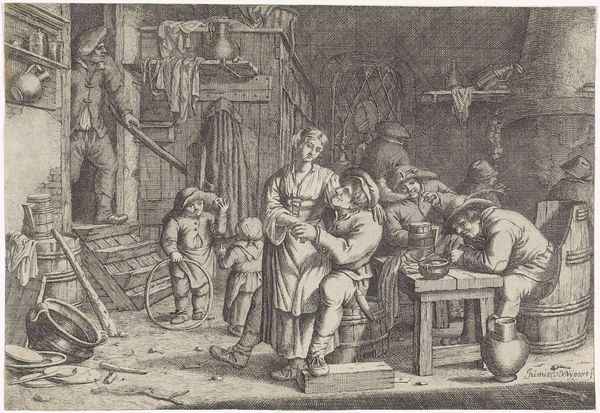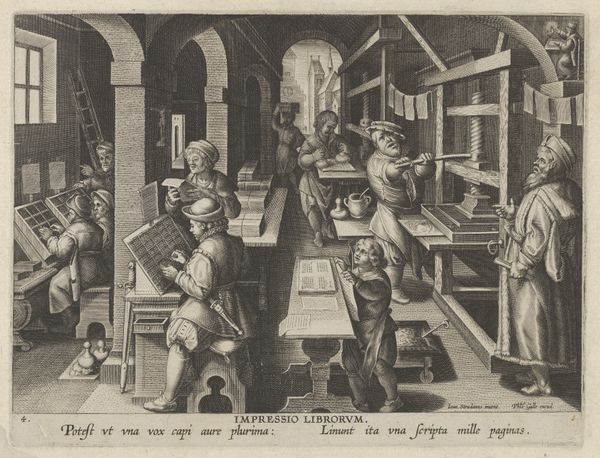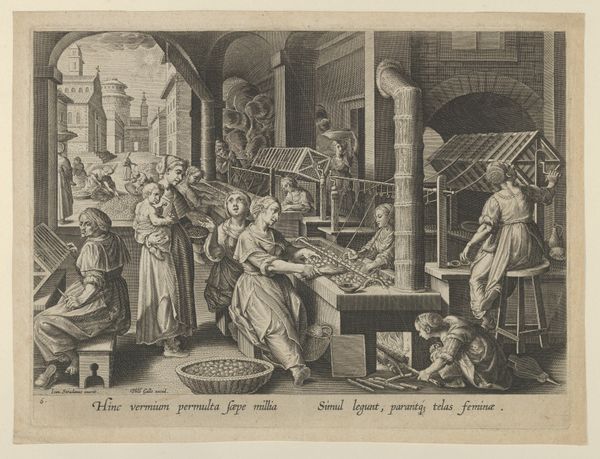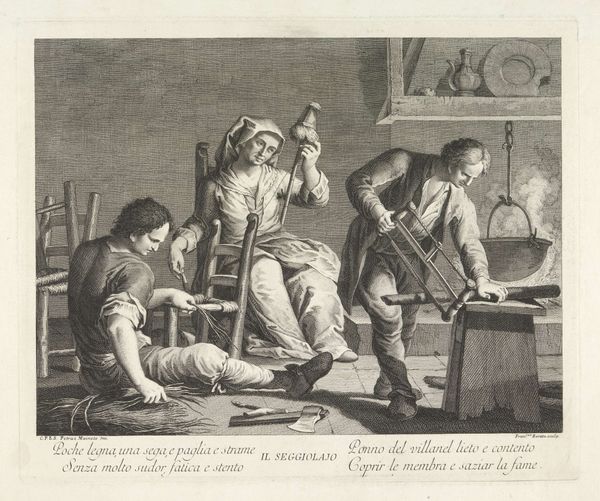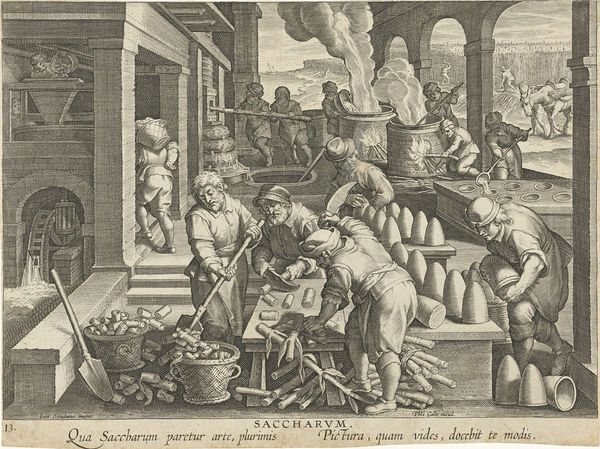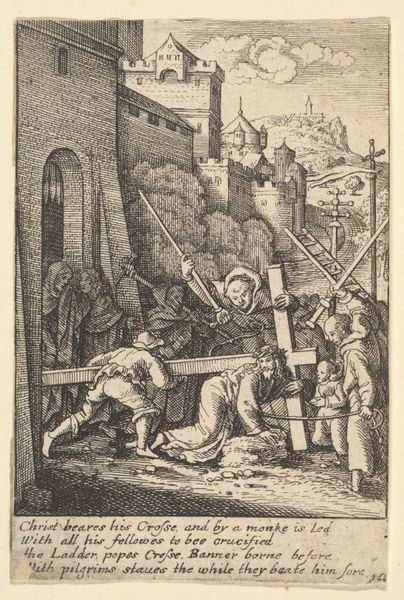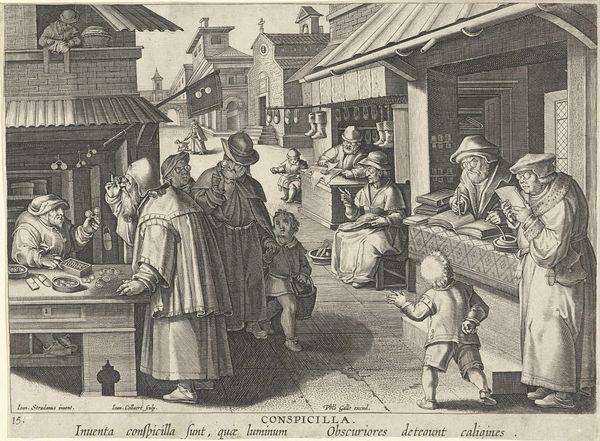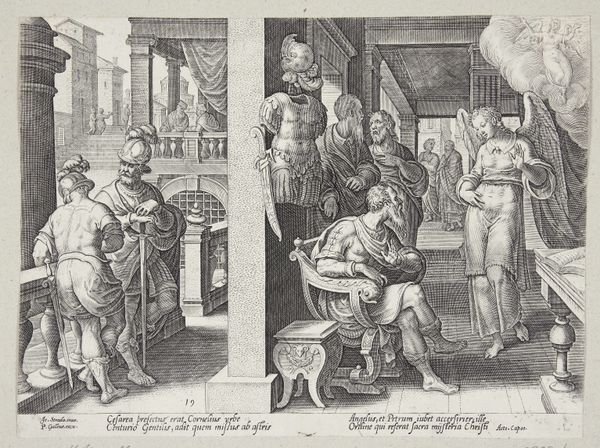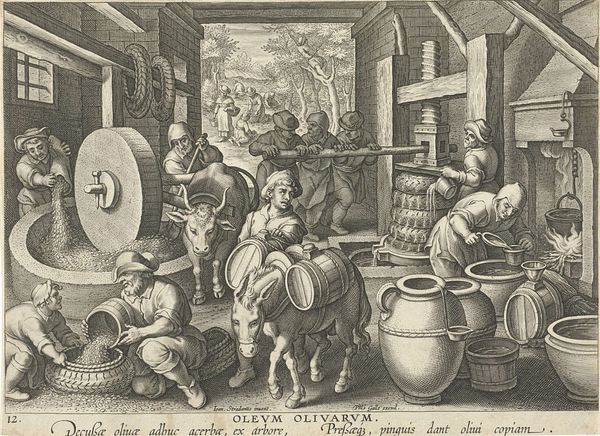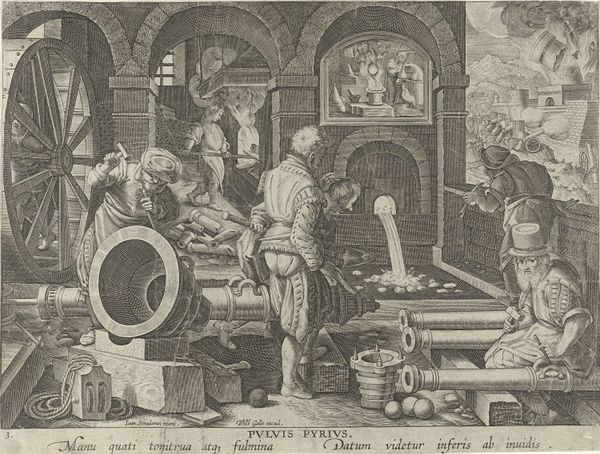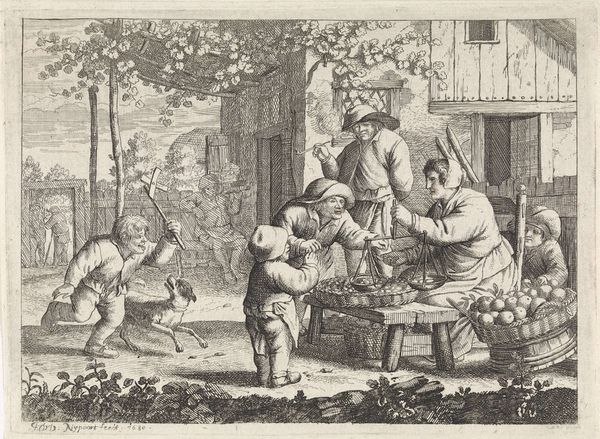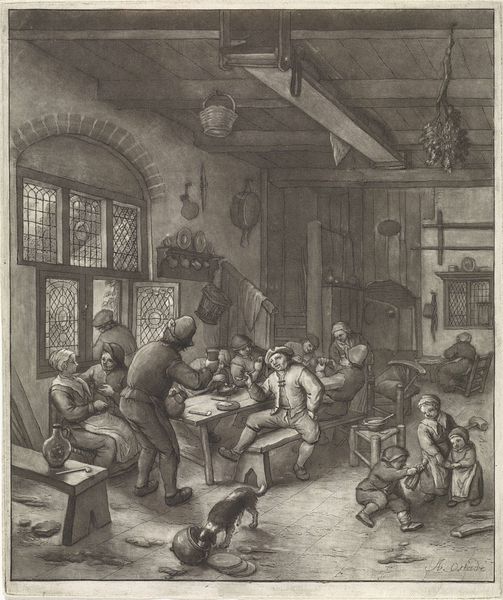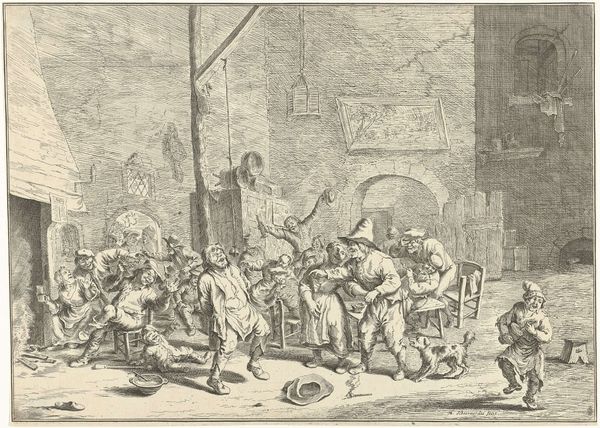
print, metal, engraving
#
baroque
# print
#
metal
#
old engraving style
#
genre-painting
#
history-painting
#
engraving
Dimensions: height 200 mm, width 275 mm
Copyright: Rijks Museum: Open Domain
Editor: This engraving, "Polijsten van harnassen," or "Polishing Armor," by Jan Collaert, dates back to somewhere around 1589 to 1593. There's an incredible amount of detail! It’s a workshop scene, filled with workers and piles of armor. What stands out is the apparent industriousness, yet something about the muted tones and the nature of the work also feels oppressive. What do you see in this piece? Curator: It's fascinating how Collaert captures both the mundane and the martial aspects of 16th-century life. The scene speaks to the socio-economic structures of the time – consider the division of labor represented. These workers, essential to the war machine, are essentially cogs in the process. Look closely – do you notice how the figures are rendered? They lack individuality; their bodies are bent to the task, almost dehumanized. What does this suggest to you? Editor: It's almost as if they’re extensions of the machines and the armor itself, isn’t it? It does prompt questions about labor, the value of human life during wartime, and perhaps even the glorification of conflict. Curator: Precisely. We have to situate this piece within the context of the religious and political conflicts that raged across Europe during that period. This workshop is complicit in that. The 'polished armor' symbolizes more than mere functional protection, doesn't it? It represents power, status, and the tools of domination. Consider how the act of polishing, of refining these war instruments, mirrors a broader societal process of justifying violence. Does that connection resonate? Editor: Definitely. It really brings up uncomfortable truths about the intersection of craft, violence, and power, making me rethink how we understand historical images like this. Curator: Indeed. The print encourages us to question the narratives of heroism and valor often associated with warfare, and to recognize the often invisible labor that sustains it. Editor: I appreciate your insights, I'm left with a far more critical and nuanced view. Curator: My pleasure. Examining art with that lens opens new possibilities for understanding and challenging those systems.
Comments
No comments
Be the first to comment and join the conversation on the ultimate creative platform.

